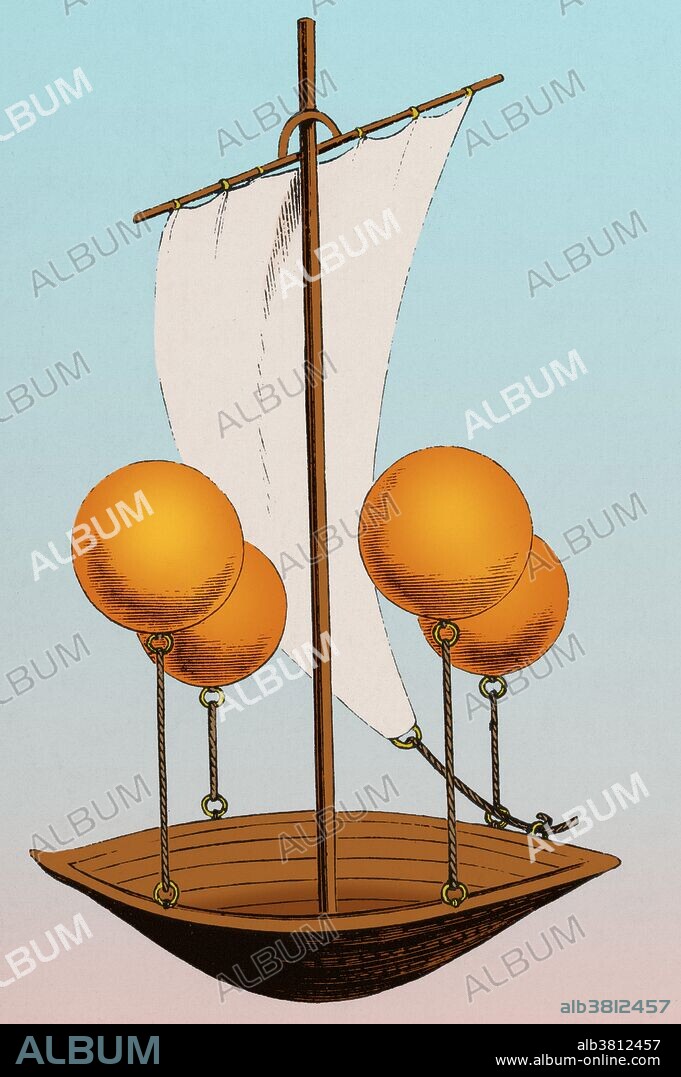alb3812457
Lana de Terzi's Flying Boat, 1670

|
Ajouter à une autre Lightbox |
|
Ajouter à une autre Lightbox |



Avez-vous déjà un compte? S'identifier
Vous n'avez pas de compte ? S'inscrire
Acheter cette image.
Sélectionnez l'usage:

Titre:
Lana de Terzi's Flying Boat, 1670
Légende:
Voir la traduction automatique
Francesco Lana de Terzi (1631 - February 22, 1687) was an Italian Jesuit priest, mathematician, naturalist and aeronautics pioneer. He was the first to sketch the concept for a vacuum airship and has been referred to as the Father of Aeronautics for his pioneering efforts. In 1663, encouraged by the experiments of Otto von Guericke (Magdeburg hemispheres), he developed an idea for a lighter than air vessel. His design had a central mast to which a sail was attached, and four masts that had thin copper foil spheres attached to them: the air would be pumped out of the spheres, leaving a vacuum inside, and so being lighter than the surrounding air, would provide lift. The airship would be steered like a sailing boat. Each sphere would have had a diameter of 24 feet 7 inches. Terzi calculated that the weight of a sphere would be 396 lbs. He calculated that the air in the sphere would weigh 638 lbs, and would provide enough lift to carry 6 passengers. In 1670, he published a book titled Prodromo, including a chapter which contained the description of a flying ship. A model of his invention is on display at the Smithsonian in Washington, DC.
Crédit:
Album / Science Source
Autorisations:
Taille de l'image:
2642 x 3972 px | 30.0 MB
Taille d'impression:
22.4 x 33.6 cm | 8.8 x 13.2 in (300 dpi)
Mots clés:
AÉRONAUTIQUE • AVIATION • AVION • AVIONS • DIRIGEABLE • JESUITE • JESUITES (ORDRE) • JESUITES MOINES • JESUITES • MACHINE VOLANTE • MOINES JESUITES • ORDRE, JESUITE • TRANSPORT AERIEN • TRANSPORT AVION • VOLANT
 Pinterest
Pinterest Twitter
Twitter Facebook
Facebook Copier le lien
Copier le lien Email
Email
